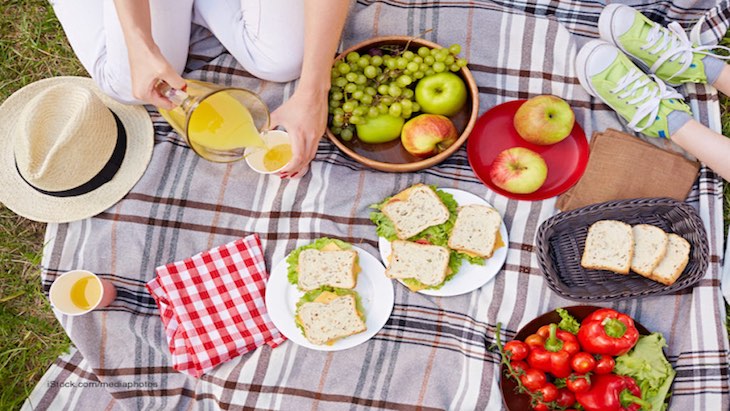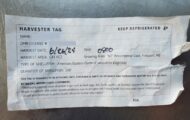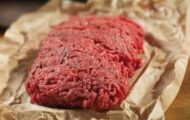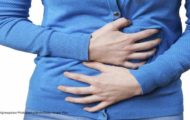Don’t get food poisoning this summer with tips from the USDA. Warmer temperatures mean that food safety rules change, and there is more opportunity for pathogens to grow in food. Pack perishables with a cold source every time.

Food that is in the danger zone of 40°F and 140°F is risky. In that temperature range, pathogen bacteria can double in volume every 20 minutes. When it’s hot outside, with a temperature of 90°F or higher, you must refrigerate perishable foods within one hour, not the two hours that is commonly recommended. Keep cold foods cold by using ice to envelop the serving container, or keep it in a cooler with ice packs until you’re ready to serve.
Keep hot foods hot by placing food in warmings trays or in a cooler spot on the grill. And when you’re done eating, divide leftovers into smaller portions and get them into a fridge right away. Remember that a cooler can’t cool food down efficiently – it’s made to keep food cool.
When you’re packing for your trip or picnic, put beverages in one cooler and perishable food in another. The cooler with beverages will be opened more often, which can cause temperature fluctuations. Full coolers will keep food cold longer than half full ones. Fill extra space in the cooler with more ice. Make sure that your coolers are stocked with ice or frozen sources like frozen water bottles or juice boxes. Once you are at your destination, put the cooler in the shade. Don’t keep it in the car.
If you are camping or backpacking for more than a day, don’t get food poisoning by considering packing shelf stable items that don’t need to be kept cold. Good choices include peanut butter in plastic jars; canned tuna, ham, chicken, and beef; beef jerky and other shelf-stable meats; dried noodles and soups; dehydrated foods; whole or dried fruits (cut fruits must be kept refrigerated); nuts; powdered milk; and fruit drinks.
And don’t forget basic food safety rules. Wash your hands before preparing food and before eating. If running water is available, use soap. If no cleaning running water is available, use a hand sanitizer or moist towelette. Do not use water from streams and rivers; that water may be unsafe for drinking.




